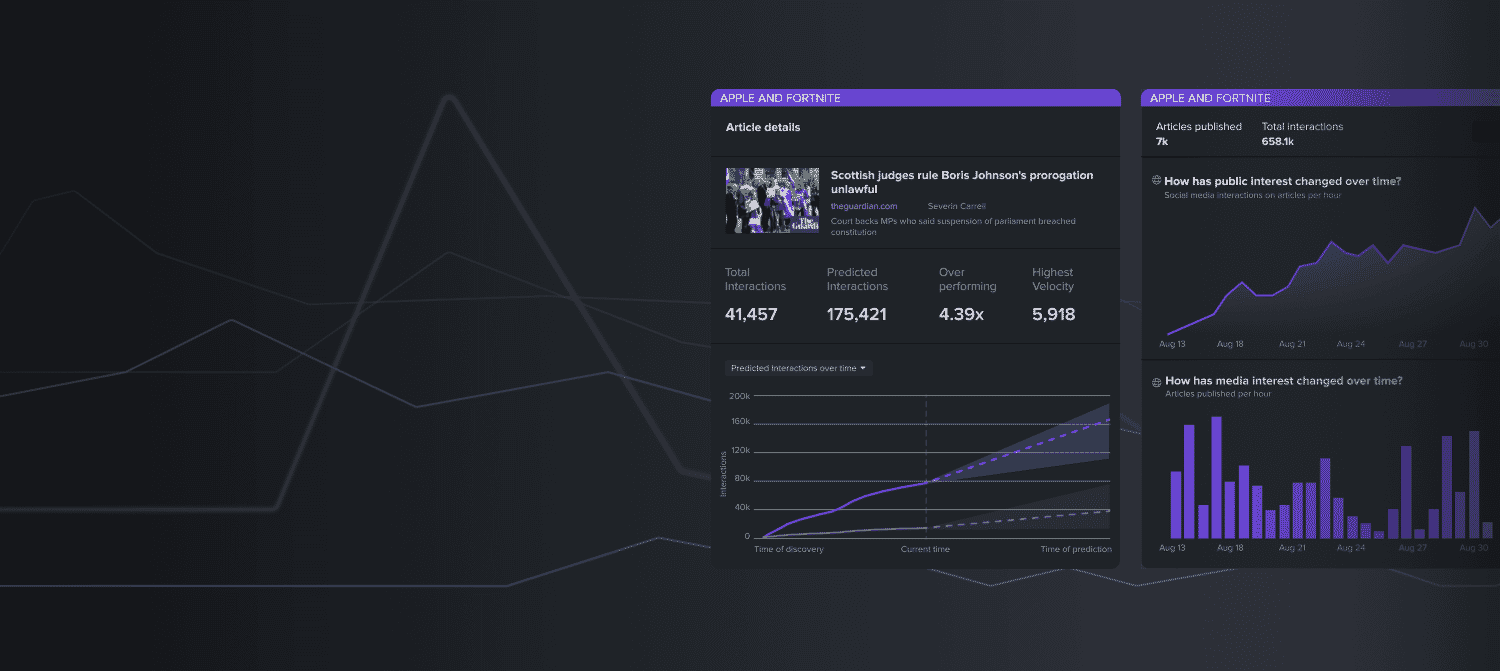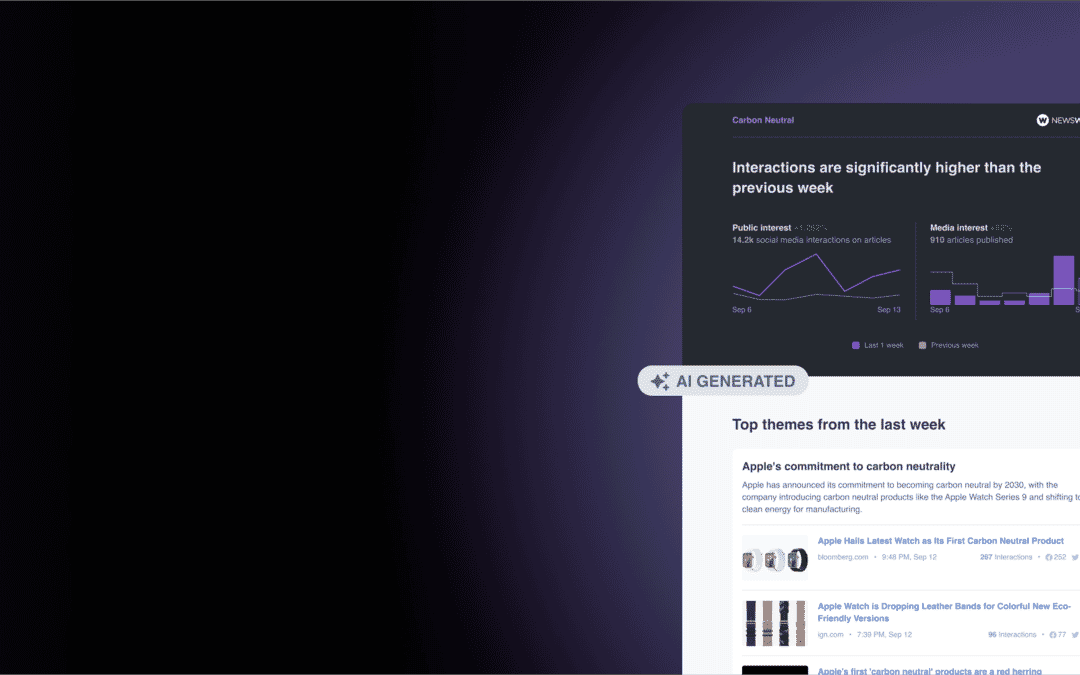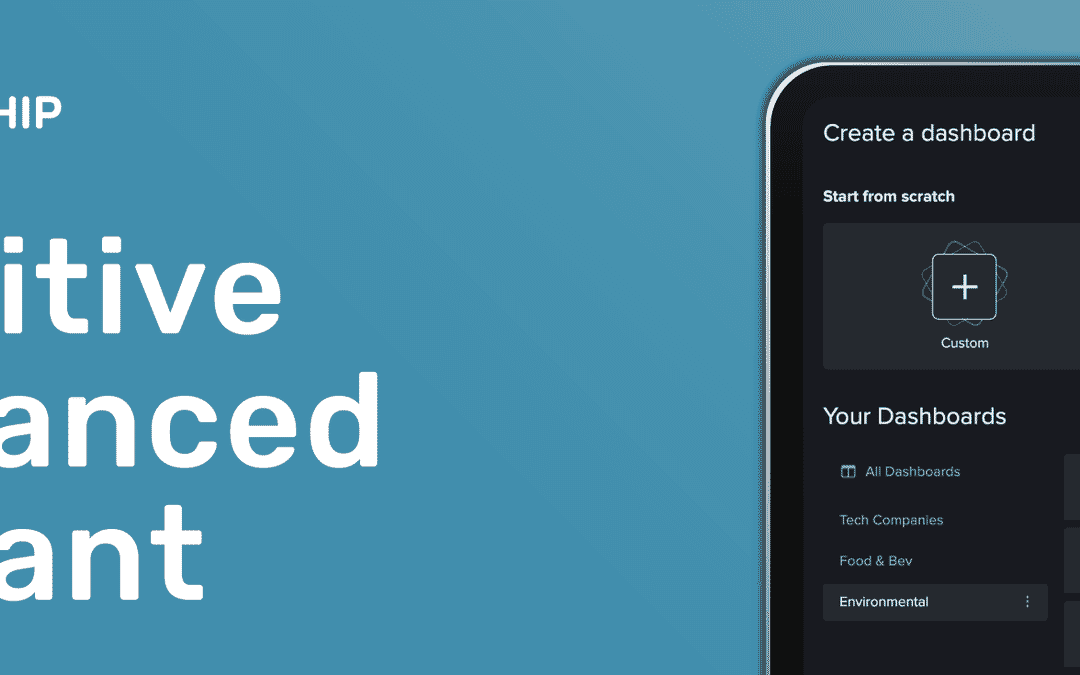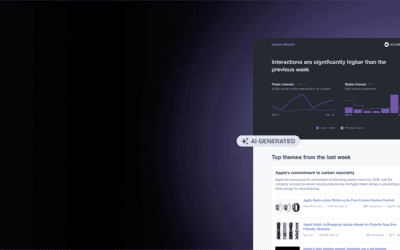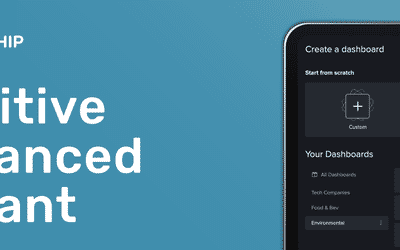When 25% of your brand’s value is tied to its reputation with the public, how can you make sure you’re being proactive when it comes to your brand and media monitoring efforts?
The old way of measuring makes this impossible, with metrics often a day or more old by the time they make their way onto your dashboards and reports. Whether you’re managing live issues, monitoring the media landscape for context, or trying to keep stakeholders informed, that’s simply not good enough in 2024.
NewsWhip’s predictive media insights help comms and insights leaders at the frontline of reputation management to understand the chaotic world of social and digital media, delivering clarity on what’s happening – and what will happen. Here’s a few ways on how we deliver on just that.
Timeline
NewsWhip’s Timeline feature gives you a real-time view into how public and media interest in a given topic are changing. This means you get an hour-by-hour insight into whether a topic is growing and gaining momentum or falling away.
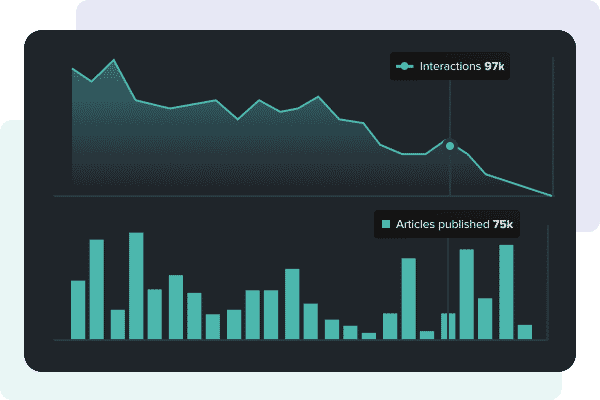
Say you’re managing a response to a live issue — you don’t want to make your statement when public attention has already veered away to the next thing, thereby bringing attention back to your company after the public has already moved on. Without a real-time view into cumulative media coverage and public interest in that coverage, there’s no way to time your response appropriately and ensure you’re not making a statement too early, or too late.
Article-level prediction
It’s impossible to talk about foresight without talking about prediction, and NewsWhip brings our users that with predicted engagement at the article level. Using our proprietary technology, we’re able to tell you how much a given article is expected to grow in the next 24 hours.
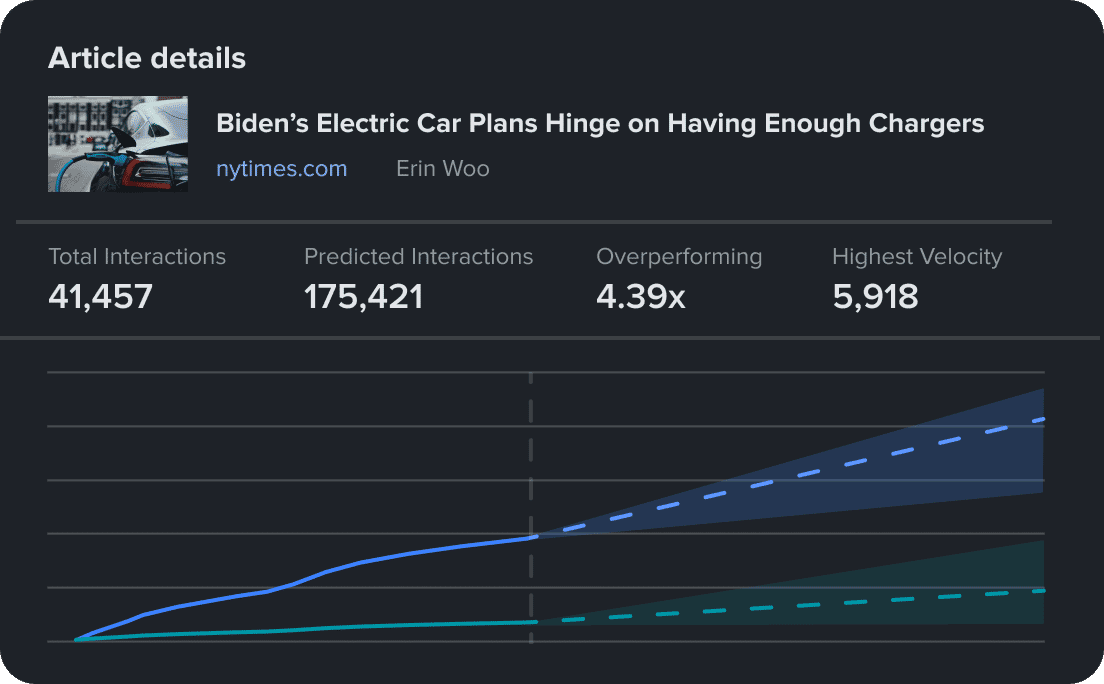
This has two main functions. The first is obvious — if there’s an article you’re already aware of that seems to be popular with the public, you want to know exactly how popular it’s going to be so you can plan appropriately for the future. There might be room to offer greater context to the reporter that authored the article, or share on your own channels for wider exposure depending on the content.
The second function is perhaps less obvious but just as important, and that’s seeing when an article is not going to make any kind of real impact. We all know that, devoid of context, an article in a big publication can cause concern on executive and management teams, but being able to show that an article is actually not being shared widely can go a long way to calming the nerves of those stakeholders, and being able to offer real-time updates if anything changes.
Real-time alerts
Speaking of real-time understanding, it’s impossible to be glued to a dashboard at all times for every individual issue — we know you have other things to do.

Real-time alerts remove some of the need for active monitoring by always alerting you when a set condition is met. For niche searches, that might be when any article is published, but for more frequent mentions it might be when that article hits a certain threshold of public attention.
There’s even an option to set up an alert for when we are predicting an article to hit a given level of public interest, so that you can always stay ahead of any emerging issues for your brand, no matter if you’re logged in or not.
AI Digests
Sometimes for foresight to work, we do need to have the context of looking back at the top coverage from a previous period, and our AI Digests allow users to do that in the most efficient way possible.
When an AI Digest is set up, we analyze the top 40 articles from your search, using the latest GPT models to identify and explain the most important themes of which you and your stakeholders need to be aware. The technology will then group those articles and offer a one- or two-sentence analysis of each topic or theme. This gives an at-a-glance set of metrics that users can then use to base all of the above off when planning responses.

For example, in isolation, you might see the real-time numbers coming in as noteworthy, but having the context that the top news of yesterday saw 5x the coverage and 10x the engagement levels help you make faster, more informed decisions with that information, keeping you ahead of the news and able to spend more time on the communications part of the comms function.
From hindsight to foresight
All of these features are designed to help our users quantify news events across the web and social media, and forecast the impact that coverage is going to have on their brand, moving from hindsight to foresight in the process.
If you’d like to find out more about making your media monitoring more proactive, get in touch here.





